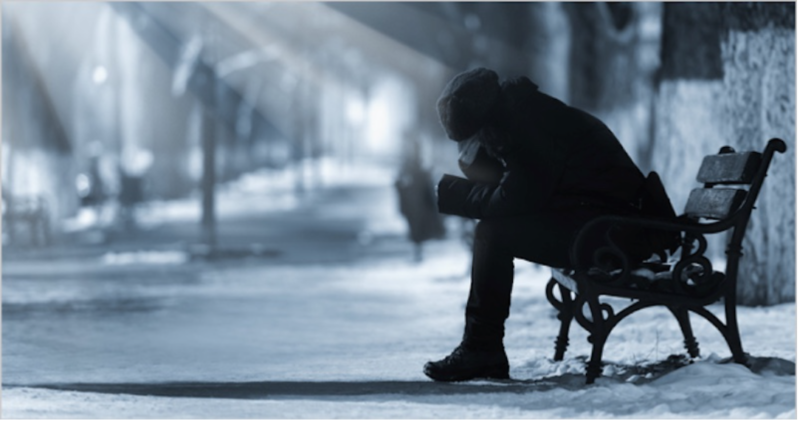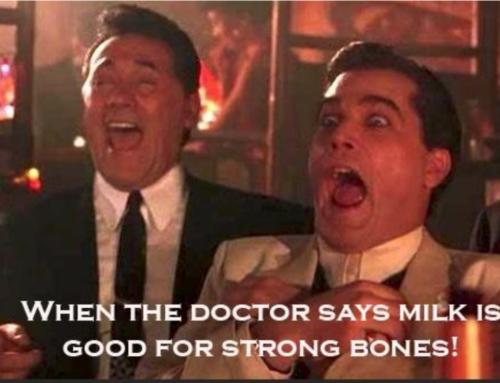For millions of us living in temperate climates (regions that experience cold winters and mild summers, covering much of North America, Europe and the northern parts of Asia), the days have shortened and the weather is getting colder. And for those of us in the more Northern latitudes, the worst is yet to come. We’re bracing for the inevitable snowstorms that wreak havoc on our everyday lives. The warm glow of the holidays is over. School is back in session, and work is back in full swing. Oh, and we have those passionate new year’s resolutions we made: Lose some weight, get in shape, etc.
It’s enough to make you depressed, eh?!
Well, the reality is that the late autumn and winter months can cause exactly that…depression. The medical term for this condition is Seasonal Affective Disorder (SAD). The National Institute of Mental Health defines SAD as “a type of depression that comes and goes with the seasons, typically starting in the late fall and early winter and going away during the spring and summer.”
Although the variation in moods coinciding with changing seasons has been acknowledged for quite some time, the term was not assigned to the disorder until 1984. The incidence of SAD in America has been estimated anywhere between 1% (Floridians) and as high 10% for Alaskans. Severe cases, those that result in hospitalization or death by suicide, are estimated in the very low end of that range. Despite the difficulty in clinically diagnosing SAD independent of other types of depression, the fact of the matter is that tens of millions of us experience the negative impact of the cold, dark days of winter, albeit to varying degrees. The effects are real. They can disrupt our ability to function and interfere with our personal relationships.
Common symptoms of SAD include:
– Mood changes, sometimes severe.
– Lower energy levels.
– Food cravings, in particular, sugar, alcohol, and carbohydrates.
– Oversleeping.
– Overeating and weight gain.
– Social withdrawing and isolating.
What is the Cause?
In a nutshell, SAD is caused by a lack of sunlight! Let’s explain.
Our bodies follow the cycle of the day, also known as the circadian rhythm. This is why we begin to slow down with the setting sun; sleep at night, and rise with the sun in the morning. The long rays of the setting sun hit optic nerves in our eyes, triggering the release of melatonin. Melatonin is a hormone produced by the pineal gland. It tells the body to start preparing for sleep, and we begin to tire.
The low amount of daylight in winter results in the prolonged release and presence of melatonin, which is more suppressed by the increased sunlight in the spring and summer. In response to this, we tend to feel more tired, sluggish, and maybe even more depressed in winter. Our digestive system also slows down, which is the main reason why eating late at night is such a bad habit.
Light deprivation in winter also reduces the production of another hormone, serotonin, which helps regulate mood, energy, and appetite. Serotonin is commonly called the “happy hormone” as it contributes to feelings of happiness and well-being. Here in the Northeast, average hours of daylight for January and February are 9 ½ to 10 ½ hours a day respectively, as opposed 14 to 15 hours per day from May through August. That’s a big difference in the number of opportunities we have to keep our hormone levels balanced with our sunlight intake! No wonder many of us feel the emotional effects of this seasonal shift.
So, since we don’t have control over the cycles of the season or the sun’s rays, what can we do to counteract SAD and its effects?
Cures for the Winter Blues:
Any and all helpful mitigators for depression will work to help with symptoms of SAD.
o At the top of the list is physical exercise – body movement. This doesn’t have to be rigorous. Walking, jogging, yoga, stationary bike, etc. Do whatever you enjoy. Keep moving. Exercise, especially cardio releases dopamine in the body, which regulates the “reward receptors” in our brains. Exercise is increasingly being linked to helping treat mental illness such as depression and addiction.
Below are some things you can do to help:
o Next, beef up your laughter and good company. Hearty laughter is certainly a powerful mood enhancer! Comedy is incredibly effective, as is seeking the company of good, funny, light-hearted and POSITIVE people.
o Also, get more sunlight! Yes, there is less sun this time of year, but despite the fact that the days are shorter, the sun does still come out. And although it is not as strong and warm, light is light and soaking in as much as you can help. For those of you commuting and working in an office, try to make a conscious effort to bundle up and get some exposure on your lunch break.
o Another tip is to try to enjoy the serenity and peace of a fresh snowfall. If you are in good health, break out the shovel to get some exercise. Enjoy the crisp air as it fills your lungs.
Some more options to help boost your mood:
o The satisfaction of getting stuff done is another mood booster. Consider taking on indoor projects that you’ve been meaning to complete. Whether its fixing things around the house; cleaning out the attic or closet; or painting a room, you’ll feel better with that sense of accomplishment when you finish.
o Or perhaps it’s time to pick up a hobby such as reading; writing; playing an instrument; doing jigsaw puzzles; and so on. You can also use the winter months to catch up on a TV series or movies you’ve been meaning to watch.
o Finally, stay connected with people, and reach out if you get lonely. Be proactive and pick up the phone. Don’t isolate. Join a group, sport, activity, or fellowship that has members with similar interests to yours.
Vitamin D – Honorable Mention
One last thing. At Rebel Health, we never miss an opportunity to reiterate the importance of Vitamin D, the “sunshine vitamin.” Vitamin D is necessary for numerous and critical bodily systems and functions. It does not travel through the sun’s rays. Rather, there is a fluid right under our skin called ergosterol, which when in contact with the ultraviolet rays of the sun is converted into vitamin D and absorbed into the bloodstream. Reduced duration and strength of the sun in more northern climates lowers the production of vitamin D and necessitates the need for supplementation from mid-fall to mid-spring.
** FRIDAY, DECEMBER 21ST WAS THE SHORTEST DAY OF THE YEAR AND EVERY DAY GETS LONGER BY SEVERAL MINUTES DEPENDING ON WHERE YOU LIVE. THE LONGEST DAY OF THE YEAR, THE SUMMER SOLSTICE, HAS ALMOST 6 MORE HOURS OF DAYLIGHT AND WE’RE INCHING OUR WAY CLOSER EVERY DAY! **






